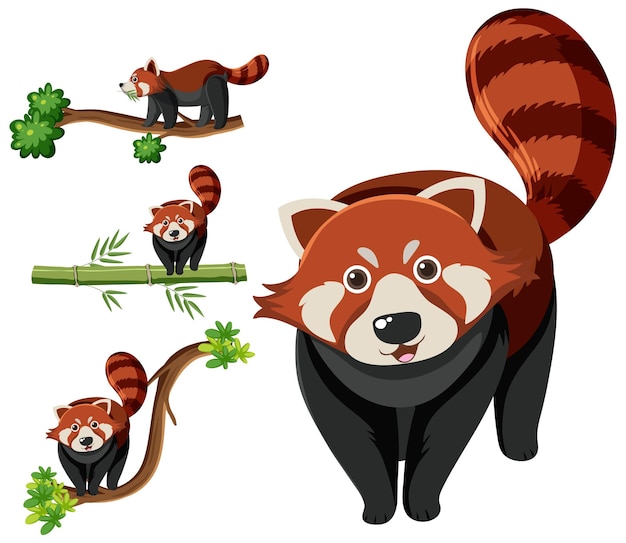10 Interesting Facts About Red Pandas

Did you know that red pandas are not actually related to giant pandas?
Red pandas are also known as firefoxes or lesser pandas.
These adorable creatures are native to the eastern Himalayas and southwestern China.
Red pandas have a striking reddish-brown fur coat which helps them blend into their forest habitats.
Unlike other pandas, red pandas are primarily herbivores, feasting on bamboo, fruits, and occasionally eggs.
Red pandas have a pseudo thumb, which is formed by an extended wrist bone, allowing them to grip bamboo with ease.
These agile climbers spend most of their time in trees, using their sharp claws and long tail for balance.
Red pandas have a unique feature called ankle rotation that allows them to climb down trees headfirst.
Despite their small size, red pandas can jump up to 6 feet in the air.
Red pandas prefer a solitary lifestyle and are territorial animals.
These pandas are known for their shy and elusive behavior, making it difficult to spot them in the wild.
Red pandas communicate through a variety of sounds, including squeaks, huff-quacks, and chipmunk-like chirping.
Red pandas have a special adaptation called thermoregulation to keep warm in cold weather.
These adorable creatures wrap themselves in their furry tail to conserve body heat during winter.
Red pandas have a unique diet compared to other mammals, as they can digest toxic bamboo leaves.
These pandas have an elongated and flexible spine, allowing them to perform acrobatic movements in trees.
10 Interesting Facts About Red Pandas part 2
Red pandas are excellent climbers but surprisingly terrible swimmers.
Due to their declining population, red pandas are considered vulnerable by the International Union for Conservation of Nature.
Red pandas have a keen sense of smell, which helps them locate food and mark their territory.
These pandas have a lifespan of approximately 8-10 years in the wild and up to 15 years in captivity.
Red pandas have specialized molars and premolars, which help them efficiently chew bamboo.
These pandas have retractable claws, similar to cats, which they use for climbing and self-defense.
Red pandas are most active during dawn and dusk, known as crepuscular behavior.
These pandas have a gestation period of about 112-158 days, giving birth to 1-4 cubs at a time.
Red panda cubs are born blind and helpless, with their fur initially being gray rather than red.
Red pandas are highly susceptible to habitat loss due to deforestation and illegal hunting.
Red pandas have a playful nature and often engage in activities like rolling downhill and chasing their own tail.
These pandas have a natural predator in the form of snow leopards, which has contributed to their declining numbers.
Red pandas have a complex social structure, with males and females coming together only during the mating season.
These pandas have a high-pitched alarm call, which they use to alert others of potential threats.
Red pandas have a gentle and docile temperament, making them popular attractions in zoos worldwide.
These pandas have a unique vocalization known as quacking, which is used during courtship rituals.
Red pandas have a specialized adaptation in their paw pads, which helps them grip slippery surfaces like tree trunks.
These pandas are important seed dispersers, as the undigested seeds from their diet help reforest their habitats.
Red pandas have a preference for living in high-altitude forests, ranging from 2,200 to 4,800 meters.
These pandas have a distinct white face with black tear-shaped markings, making them look like they’re wearing masks.
Red pandas have a slow metabolic rate, which allows them to conserve energy during periods of scarcity.
These pandas are capable of standing on their hind legs, similar to a meerkat, to get a better view of their surroundings.
Red pandas have a strong grip and can even sleep on branches without falling off.
These pandas are excellent grooming themselves and spend a significant amount of time cleaning their fur.
Red pandas have a lifespan in captivity that can exceed 20 years with proper care and nutrition.
These pandas have excellent camouflaging abilities, making it difficult for predators to spot them in the wild.
Red pandas have a preference for living in old-growth forests, which provide a dense canopy for their arboreal lifestyle.
These pandas have distinctive round ears, which are covered in fur to protect against cold temperatures.
Red pandas are true ambassadors for wildlife conservation, bringing attention to the fragile ecosystem they depend on.

